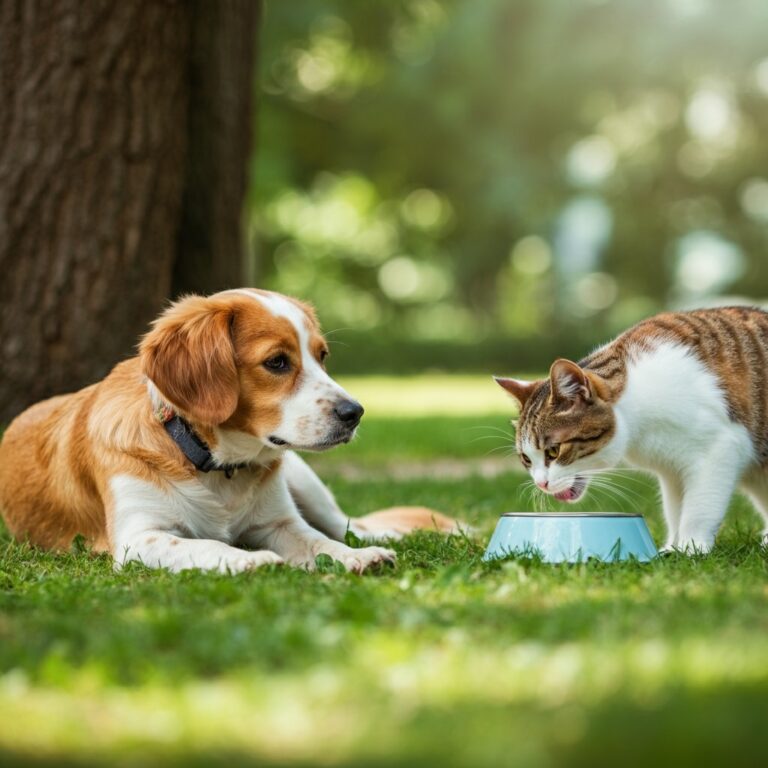
When was the last time you thought about what’s actually in your pet’s water bowl? Most pet owners focus on premium food, regular vet visits, and daily exercise—all crucial elements of pet care. But there’s one fundamental need that often gets overlooked: access to clean, safe drinking water.
Your furry friend drinks from that same bowl every day, trusting that what you’ve provided will keep them healthy and hydrated. Yet contaminated water can silently undermine even the best pet care routines, leading to everything from minor digestive upset to serious, life-threatening conditions.
Understanding the connection between water quality and pet health isn’t just about being a responsible owner—it’s about recognizing that clean water serves as the foundation for your pet’s overall well-being. The quality of water your pet consumes affects their immune system, organ function, skin and coat health, and even their behavior.
This comprehensive guide explores how water quality directly impacts your pet’s health, what contaminants pose the greatest risks, and practical steps you can take to ensure your companion has access to the cleanest water possible. Because when it comes to your pet’s health, every drop matters.
How Water Quality Directly Affects Pet Health
Water makes up 60-70% of your pet’s body weight, making it the most critical nutrient for survival. Unlike humans, who can often detect off-tastes or odors in contaminated water, pets typically drink whatever water is available to them, regardless of quality.
The Foundation of Cellular Function
Clean water enables proper cellular function throughout your pet’s body. Every biological process—from digestion to temperature regulation—depends on adequate hydration with quality water. When pets consume contaminated water, their bodies must work harder to filter out toxins, placing additional stress on vital organs like the kidneys and liver.
Poor water quality can lead to dehydration even when pets appear to be drinking adequate amounts. Contaminated water may cause nausea or digestive discomfort, leading pets to drink less and become chronically dehydrated. This creates a dangerous cycle where the pet’s health continues to decline.
Impact on the Immune System
Your pet’s immune system relies heavily on proper hydration to function effectively. Clean water helps transport white blood cells throughout the body, flush out toxins, and maintain the mucous membranes that serve as the first line of defense against pathogens.
When pets consistently consume poor-quality water, their immune systems become compromised. This makes them more susceptible to infections, slower to recover from illnesses, and less able to respond to vaccinations effectively.
Common Water Contaminants That Threaten Pet Health
Understanding what might be lurking in your pet’s water bowl is the first step toward protection. Many contaminants present in tap water can pose serious health risks to pets, who are often more sensitive to these substances than humans.
Chlorine and Chloramines
Most municipal water supplies use chlorine or chloramines for disinfection. While generally safe for human consumption, these chemicals can cause stomach irritation in sensitive pets. Some animals may refuse to drink chlorinated water due to the taste and smell, leading to dehydration.
Chloramines, increasingly used by water treatment facilities, are more stable than chlorine and harder to remove through standard filtration methods. Long-term exposure to these chemicals may contribute to digestive issues and skin problems in pets.
Heavy Metals
Lead, mercury, copper, and other heavy metals can leach into water from old pipes, plumbing fixtures, or environmental contamination. Pets are particularly vulnerable to heavy metal poisoning because of their smaller body size and faster metabolism.
Lead exposure can cause neurological problems, developmental issues in young animals, and gastrointestinal distress. Mercury contamination may lead to kidney damage and neurological disorders. Copper toxicity, while less common, can cause liver damage and anemia.
Bacteria and Parasites
Waterborne bacteria such as E. coli, Salmonella, and Campylobacter can cause severe gastrointestinal illness in pets. These organisms may be present in well water, contaminated municipal supplies, or water that has been sitting in bowls for extended periods.
Parasites like Giardia and Cryptosporidium are particularly dangerous for pets. These microscopic organisms can survive in water for months and are resistant to standard chlorination. Infection often leads to chronic diarrhea, weight loss, and malabsorption of nutrients.
Nitrates and Nitrites
Agricultural runoff and septic system contamination can introduce nitrates and nitrites into water supplies. These compounds are especially dangerous for young animals, as they can interfere with oxygen transport in the blood, leading to a condition called methemoglobinemia or “blue baby syndrome.”
Even at levels considered safe for humans, nitrates can cause digestive upset and may contribute to the formation of cancer-causing compounds in the digestive tract.
Pharmaceutical Residues
Modern water treatment facilities often cannot completely remove pharmaceutical residues from treated water. These may include antibiotics, hormones, and other medications that can disrupt your pet’s endocrine system and contribute to antibiotic resistance.
While the long-term effects of low-level pharmaceutical exposure in pets are still being studied, growing evidence suggests these residues may contribute to reproductive problems, behavioral changes, and increased susceptibility to certain diseases.
Recognizing Signs of Water-Related Health Issues
Pets cannot tell us when their water tastes off or makes them feel unwell. Learning to recognize the subtle signs of water-related health problems can help you identify issues before they become serious.
Digestive Symptoms
Frequent vomiting, diarrhea, or changes in bowel movements may indicate your pet is reacting to contaminants in their water. These symptoms can develop gradually, making them easy to attribute to other causes like diet changes or stress.
Pay attention to patterns—if digestive issues seem to worsen after your pet drinks water or occur regularly without other apparent causes, water quality should be investigated.
Changes in Drinking Behavior
Pets may instinctively avoid water that tastes or smells contaminated. If your normally well-hydrated pet suddenly seems reluctant to drink, becomes picky about water sources, or shows signs of dehydration despite having access to water, contamination could be the culprit.
Continues after advertising
Conversely, excessive thirst can also indicate problems. If your pet suddenly begins drinking much more water than usual, this could signal that their body is working harder to flush out toxins or that they’re experiencing kidney stress.
Skin and Coat Problems
Poor water quality can manifest as skin irritation, excessive scratching, dull coat, or recurring hot spots. Chlorine and other chemical contaminants can dry out your pet’s skin and coat, while bacterial contamination may contribute to skin infections.
These issues often develop slowly and may be attributed to allergies, diet, or other factors. However, improving water quality frequently leads to noticeable improvements in skin and coat health.
Lethargy and Behavioral Changes
Pets consuming contaminated water may show subtle signs of feeling unwell, including decreased energy, reduced appetite, or changes in normal behavior patterns. These symptoms can be easy to miss or attribute to aging or other health issues.
Chronic low-level exposure to water contaminants can leave pets feeling generally unwell without displaying obvious symptoms of illness.
The Science Behind Clean Water and Pet Wellness
Research continues to demonstrate the profound impact of water quality on animal health. Understanding the scientific basis for these connections helps explain why investing in clean water for your pet is so important.
Kidney and Liver Function
Your pet’s kidneys filter approximately 20-25% of their blood volume every minute, making them particularly vulnerable to water-borne contaminants. Clean water supports optimal kidney function by reducing the toxic load these organs must process.
The liver, responsible for detoxifying harmful substances, also benefits significantly from clean water intake. When pets consume contaminated water, their livers must work overtime to neutralize toxins, potentially leading to liver stress and reduced function over time.
Nutrient Absorption and Metabolism
Clean water plays a crucial role in nutrient absorption and metabolic processes. Contaminated water can interfere with the absorption of essential vitamins and minerals, even when pets are eating high-quality diets.
Proper hydration with clean water also supports healthy metabolism, helping pets maintain optimal energy levels and body weight. Dehydration or contamination-induced digestive issues can slow metabolism and contribute to weight management problems.
Cardiovascular Health
Adequate hydration with clean water supports healthy blood circulation and cardiovascular function. Contaminated water may contribute to inflammation and oxidative stress, which can negatively impact heart health over time.
Some water contaminants, particularly heavy metals, have been linked to cardiovascular problems in animals. Ensuring your pet has access to clean water supports long-term heart health and circulation.
Solutions for Ensuring Clean Water Access
Protecting your pet from water-related health issues doesn’t have to be complicated or expensive. Several practical solutions can significantly improve your pet’s water quality.
Water Testing and Assessment
Start by having your water tested to identify potential contaminants. Home test kits can detect common issues like chlorine, pH levels, and hardness, while laboratory testing provides more comprehensive analysis including bacteria, heavy metals, and other contaminants.
If you use well water, annual testing is particularly important as contamination levels can change based on environmental factors, nearby construction, or seasonal variations.
Filtration Systems
Water filtration systems range from simple pitcher filters to whole-house systems. For pet owners, activated carbon filters effectively remove chlorine, some chemicals, and improve taste and odor. More advanced systems like reverse osmosis can remove a broader range of contaminants including heavy metals and bacteria.
When selecting a filtration system, consider your specific water quality issues, budget, and maintenance requirements. Even basic filtration can provide significant benefits for pet health.
Proper Water Bowl Management
Clean, fresh water should be available to your pet at all times. Wash water bowls daily with soap and hot water to prevent bacterial growth. Stainless steel or ceramic bowls are preferable to plastic, which can harbor bacteria and may leach chemicals over time.
Change water frequently, especially during warm weather when bacteria multiply rapidly. If you notice algae growth, slime, or any unusual odor or appearance, clean the bowl immediately and provide fresh water.
Alternative Water Sources
Some pet owners choose to provide bottled spring water or distilled water for their pets. While this can be an effective short-term solution, it may be expensive for long-term use and creates environmental waste concerns.
If choosing bottled water, select brands that test for quality and avoid distilled water for regular use, as it lacks beneficial minerals that pets need for optimal health.
Read More👉 Should You Feed Pets Before or After Exercise?
Protecting Your Pet’s Health Through Better Water
Clean water represents one of the most fundamental yet often overlooked aspects of pet care. While we carefully research the best foods, toys, and healthcare for our pets, water quality deserves equal attention and consideration.
The connection between water quality and pet health extends far beyond simple hydration. Every system in your pet’s body depends on clean water to function properly, from supporting immune function to maintaining healthy skin and coat. Poor water quality can undermine even the most dedicated pet care efforts, creating health problems that may not be immediately obvious but can significantly impact your pet’s quality of life and longevity.
Taking steps to ensure your pet has access to clean, safe water isn’t just about preventing illness—it’s about providing the foundation for optimal health and vitality. Whether through filtration, regular testing, or simply maintaining cleaner water bowls, these efforts represent an investment in your pet’s long-term well-being.
Remember that pets depend entirely on us to make decisions about their health and safety. By prioritizing water quality alongside other aspects of pet care, you’re taking a proactive step toward ensuring your furry companion enjoys the healthiest, happiest life possible. After all, when it comes to protecting the ones we love, every detail matters—including every drop of water they drink.



